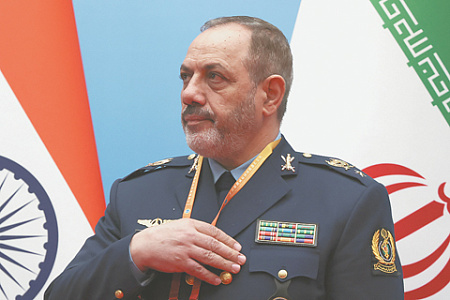
The International Atomic Energy Agency (IAEA) is urgently calling for immediate inspections of Iran’s nuclear facilities, many of which were reportedly damaged during a recent 12-day conflict. The global nuclear watchdog expressed grave concerns over a significant loss of “continuity of knowledge” regarding the Islamic Republic’s atomic program, hinting at a potential bid to de-escalate simmering tensions amid growing speculation of a renewed full-scale conflict between Israel and Iran.
In a new report circulated among member states, the IAEA highlighted its inability to inspect sites impacted by the conflict. The agency underscored the critical need to swiftly verify Iran’s declared stockpiles of nuclear material, specifically citing concerns over uranium enriched to 60%. This material, if further enriched to weapons-grade levels of 90%, could potentially be used to construct up to ten nuclear warheads, according to the IAEA’s assessments. Inspectors noted that five months without access to this material necessitates an immediate verification.
Prior to Israel’s “People as a Lion” operation, which commenced on June 13, international inspectors estimated Tehran possessed nearly 440.9 kilograms of 60% enriched uranium. Despite the operation targeting these high-purity uranium deposits, particularly a well-fortified, deep underground facility in Isfahan, Western officials largely believe a significant portion of the stockpile remains intact due to the robust nature of its subterranean infrastructure, which was not entirely destroyed.
The IAEA’s urgent appeal arrives amidst heightened rhetoric and growing fears of another major confrontation between Iran and Israel. Israeli media recently reported statements from an unnamed high-ranking official indicating that Prime Minister Netanyahu’s government aims to unseat the Iranian regime before a potential second term for President Donald Trump concludes. Separately, a Channel 13 security source in Israel warned that any new clash would provoke a “much more aggressive” and prolonged Israeli response compared to previous rounds of hostilities.
In response to these external pressures, Iran’s Defense Minister, Aziz Nasirzadeh, recently asserted that the country’s defense industry has not only recovered from the 12-day conflict but has also expanded significantly “both quantitatively and qualitatively” compared to its pre-war status.
However, beyond its nuclear ambitions and regional adversaries, Iran is grappling with an severe internal crisis: an unprecedented water shortage. Decades of inefficient resource management, outdated infrastructure, and a historic drought have left the nation facing its most profound water deficit in recent memory. The capital, Tehran, has already begun rationing water supplies.
The severity of the crisis prompted Iranian President Masoud Pezeshkian last month to suggest to Supreme Leader Ali Khamenei the radical idea of relocating the capital from Tehran to a coastal area along the Persian Gulf, where water scarcity would be less acute. Pezeshkian candidly stated, “We have no choice but to do this, or we will face problems.” He highlighted a daily decrease in Tehran’s water resources and alarming soil subsidence, reaching up to 30 centimeters in some parts of the capital.
The crisis extends far beyond Tehran. Across Iran, 19 major dams—approximately 10% of the total—have completely dried up. In Mashhad, the country’s second-largest city and a holy site for Shiites with a population of 4 million, water reserves have reportedly plummeted below 3%.
This dire situation creates a significant vulnerability for the Iranian leadership, which has previously faced public protests fueled by water shortages. Such unrest occurred in 2021 in the southwestern province of Khuzestan and in 2018, when farmers specifically blamed the government for inadequate water management. This internal discontent could be strategically exploited by adversaries, especially given that fomenting internal unrest within Iran was reportedly a stated objective of Israel’s “People as a Lion” operation.
